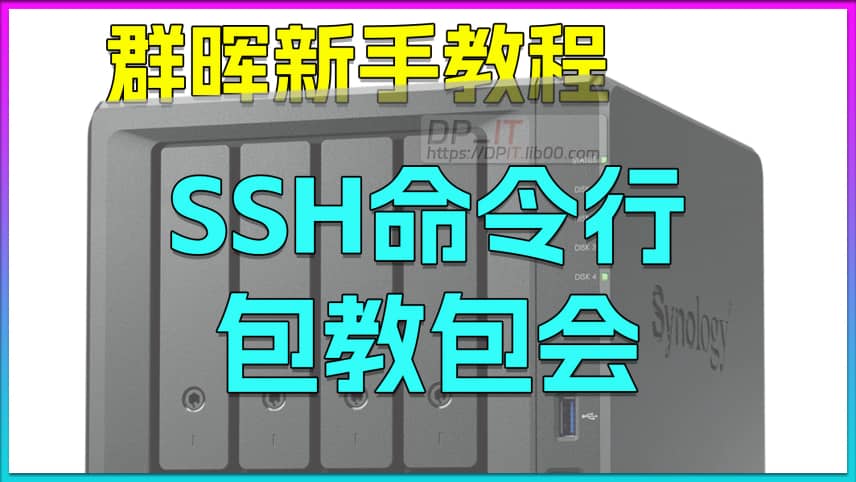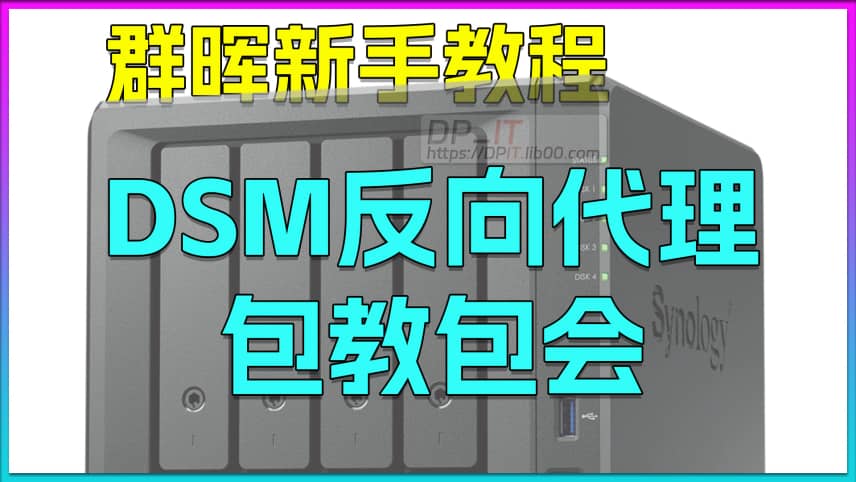
Synology SSH Command Line Tutorial
Support Content
## 1. Introduction
This video covers the operations related to SSH command-line login for Synology 7.2 system.
Disclaimer: Released with DP_IT videos, free to use, any commercial activities such as resale are prohibited. If someone sold this to you, please request a refund. Website: https://dpit.lib00.com
## 2. List of Commands Used in the Video
> SSH login
ssh eeTest_ssh@192.168.1.2 -p 51222
> Switch to root privileges
sudo -i
> Common commands after login
cd /
ls
ll
> Docker commands
docker ps -a
docker image ls
Summary Content
# Synology SSH Command Line Tutorial
## 📋 Video Overview
This tutorial provides a comprehensive beginner's guide to SSH command-line operations on Synology NAS systems. Presented by DP, the video covers everything from account setup and SSH connection to permission elevation and practical command demonstrations, offering a complete entry-level guide for new users.
---
## 🔑 Key Content Points
### 1. **Creating an SSH Login Account**
Before accessing Synology via SSH, proper user account configuration is required:
- Navigate to Control Panel → User & Group
- Create a dedicated SSH account (example: `eeTest_ssh`)
- **Critical Step**: Must check the "administrators" user group
- **Reason**: For security purposes, Synology only allows administrator group members to access SSH command-line; other user groups will encounter "service denied" or "insufficient permissions" errors
### 2. **SSH Connection Command Explained**
Standard SSH connection command format:
```bash
ssh [username]@[NAS IP address] -p [port number]
```
**Parameter Breakdown**:
- `ssh`: Fixed SSH connection command
- `username`: The account name just created (e.g., eeTest_ssh)
- `NAS IP address`: Your Synology device's LAN IP
- `-p port`: SSH service port (default 22, or custom port if modified)
**First-Time Connection Process**:
1. After executing the SSH command, you'll see a fingerprint verification prompt - type `yes` to confirm
2. Enter the password set during account creation
3. Upon successful login, the command-line prefix displays the current username
### 3. **Root Privilege Elevation**
After login, switch to root user for maximum permissions:
```bash
sudo -i
```
**Important Notes**:
- After executing the elevation command, enter the **current account's** password (not root password)
- Upon success, the command-line prefix changes from regular username to `root`
- Only root privileges allow system-level advanced operations
- Synology's unique mechanism: Must log in with an administrator account first, then elevate; direct root login is not allowed
### 4. **Linux Basic Commands in Practice**
The video demonstrates common file system navigation commands:
**Directory Navigation**:
```bash
cd / # Return to root directory
cd /volume1/eeTmp # Navigate to specific path
```
**Tab Auto-Complete Trick**:
- Press Tab twice after typing partial path to list all available subdirectories
- Significantly improves command input efficiency and reduces typos
**File Listing Commands**:
```bash
ls # List all files and folder names in current directory
ll # Detailed list mode showing permissions, size, modification time, etc.
```
**Command Prompt Interpretation**:
```
root@NAS_name:/volume1/eeTmp
```
- `root`: Current logged-in user
- After `@`: Device hostname
- After `:`: Current directory path
### 5. **Docker Command-Line Operations**
For Docker users, the video introduces two core management commands:
```bash
docker ps -a # View all containers (including stopped ones)
docker image ls # List all local images with detailed information
```
These commands help users:
- Quickly check container running status
- View image versions, IDs, and other key information
- Perform container and image management tasks
---
## 💡 Target Audience
- Synology NAS beginners
- Users needing command-line NAS management
- Those learning Docker command-line operations
- Linux command-line beginners
---
## ⚠️ Important Warnings
1. SSH login account must be added to the administrators group
2. During privilege elevation, enter the current account password, not root password
3. Users who modified SSH port must use the custom port number
4. Exercise caution with root privileges; fully understand command effects before execution
---
## 🔗 Related Resources
The video creator provides complete command text on their website (dpit.lib00.com). Search for "ssh" to find all related commands and documentation.
---
## SEO Keywords
Synology SSH tutorial, Synology command line, SSH login NAS, Synology root access, Docker CLI commands, NAS beginner guide, SSH privilege elevation, Linux commands tutorial, Synology administrator account, NAS terminal access
Related Contents
View HDD SMART Info on Synolog...
Duration: 12:19 | DPSunshine+Moonlight+Win10 Remot...
Duration: 05:10 | DPClaude Code Usage Statistics: ...
Duration: 03:50 | DPClaude Code Status Bar: Instal...
Duration: 06:47 | DPCheck Real CPU Temperature via...
Duration: 08:06 | DPiKuai OS VLAN Beginner's Tutor...
Duration: 09:18 | DPRecommended

Docker Claude Code Install & A...
13:07 | 10Claude Code AI automatic programming beginner's tu...

Synology DSM Built-in Reverse ...
03:51 | 7How to use the built-in reverse proxy feature in S...

Starsector 0.98 Chinese Versio...
06:40 | 3Starsector Online Tools Website (https://sst.lib00...

Free Personal AI Hub: Docker L...
16:26 | 4Complete process for installing docker version Lob...





